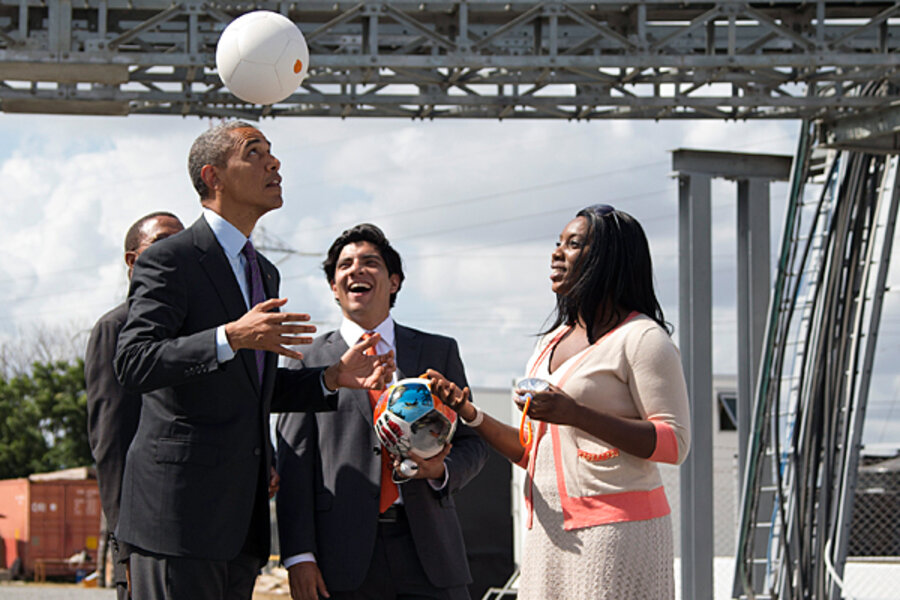Symbols of Obama's Africa trip: wreaths, ribbons, soccer balls
Loading...
President Obama concluded his trip to Africa today, standing alongside his predecessor George W. Bush at a wreath-laying ceremony to honor the victims of the 1998 US embassy bombings in Tanzania. The meeting of the presidents was a coincidence, and together they ended their trips on a somber, reflective note.
But Mr. Obama’s time in Tanzania has not been marked only by solemnity. In fact, the president’s trip was often characterized by celebration and hope; there were even moments of levity. Here are a few highlights from the past couple of days.
Obama gets his groove on
Things got off to a good start as the first family arrived in Dar es Salaam and were welcomed by Tanzanian President Jakaya Kikwete and his wife at a ceremony involving a dance and drum performance. According to Tanzania Daily News, thousands of local residents came out to catch a glimpse of the US President.
The Obamas loved the ceremony, with Michelle writing that it “warmed our hearts and made us feel right at home.” Obama was feeling so good about the greeting, he broke out into dance, and could be seen showing off his moves as he made his way down the red carpet laid out for his arrival, the Huffington Post reports.
Heading up a new plan
While visiting the Ubungo Power Plant, Obama revealed the new “Power Africa” plan, a $7 billion initiative to increase access to electricity across the continent, writes Agence France-Presse. The plan will target sub-Saharan Africa, where approximately 70 percent of the population lives without reliable access to electricity.
But the visit wasn’t all work, and Obama got the chance to stretch his legs when he was introduced to the “soccket ball,” a soccer ball that generates kinetic energy to power lights and cell phones during play, according to the Washington Post. Obama may have been a little out of his element, but he did manage to head the ball to himself.
The First Ladies Club
The trip was not all about Barack, though. Mrs. Obama was also making the rounds, and she teamed up with Laura Bush to open a summit of African leaders’ wives aimed at promoting women’s health. The summit was in support of the Pink Ribbon Red Ribbon program, which was organized by the United Nations and other non-governmental organizations – including the George W. Bush Foundation – and aims to treat cervical and breast cancer, reports Reuters.
The first ladies got on swimmingly, and were able to commiserate about the joys and the pressures of their roles, according to Politico.
“We take our bangs and we stand in front of important things the world needs to see,” said Michelle. “And eventually, people stop looking at the bangs, and start looking at the things we’re standing in front of. That’s the power of our role.”
"It's sort of a club, a sorority, I guess," added Mrs. Bush, according to the Guardian.





